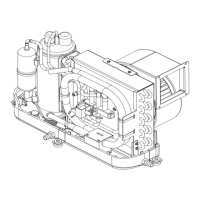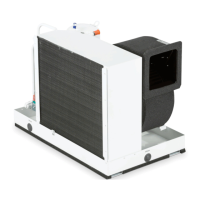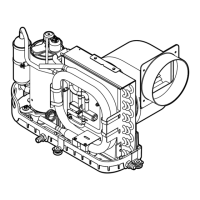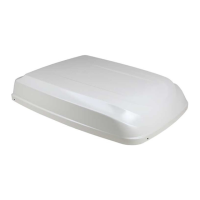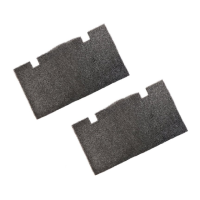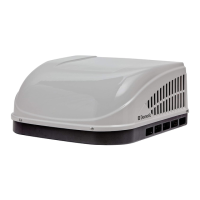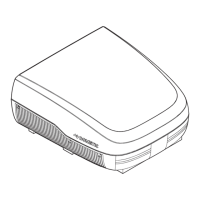6
v
English
L-2086 Installation
DX Remote & Self-Contained A/C Systems • Installation
Installation Procedures
This rst section covers installation procedures for Cruisair
direct expansion (DX) air conditioning systems, both self-con-
tained units and remote systems. Please read and understand
the man
ual before attempting to install any equipment.
SMX Installation
For installation instructions for your SMX Control, refer to
SMXII Control Systems (L-2066) or the SMX Net Control Sys-
tems (L-2067) manuals.
Electrical System
Cruisair air conditioning systems are available for use with
common power supplies throughout the world. In the United
States and most of North and South America, the systems are
115V or 230V, 60Hz, single phase AC (alternating current). In
Europe and most of Asia, power systems are typically 230V
50Hz single phase.
Compressors larger than 20,000 Btu/hr are only available in
230V single phase, 230V or 380/460V 3 phase. On 380/460V
3-phase units there is often a separate, lower voltage circuit for
the controls and blower, either 115V or 230V. On some power
systems this can be supplied by using one input line and the
neutral. If not, a separate control power feed or a transformer
will be required.
Running and starting loads of an air conditioning system are of
-
ten the largest electrical loads on a boat. It is important that the
po
wer supply system is large enough to handle these loads,
and is installed properly. Contact an electrician if you are not
sure about the proper wiring procedures. Always follow local
codes or ABYC codes for proper wiring guidelines.
Voltage and Frequency
The voltage rating of a unit is a nominal rating. The actual
voltage in a given location may be higher or lower by as much
as 10% and the system will still operate ne. For example, at
60 Hz, you will sometimes see 110VAC to 120VAC, or 208VAC
to 240VAC, or 440VAC to 480VAC. In a 50Hz environment,
common voltages range from 220V to 240V, or 380V to 415V.
When choosing a system, the voltage and frequency must be
known. While standard 60Hz equipment can often be run at
50Hz, it will experience a 17% drop in performance, however,
50Hz equipment can not be run at 60Hz because the 50Hz
motor will run too fast and cause damage. Seawater pumps
will lose even more performance at 50 Hz due to the nature of
centrifugal pumps.
Dedicated 50Hz units will give full performance at 50Hz, and
should be used when the system is going to be run exclusively
at 50Hz. If a boat is traveling in 50Hz and 60Hz environments,
then 60Hz equipment should be installed, with special attention
to sizing (especially the pumps) so that the system performs up
to expectations. When running 60Hz equipment at 50Hz, the
voltage should be reduced 17% to prevent overheating a motor.
Installing The Self-Contained
A/C Unit
Safety Warning
A Cruisair self-contained unit should never be placed
such that it can circulate carbon monoxide, fuel vapors
or other noxious fumes into the boat’s living spaces. Do
not install or operate a self-contained unit in the engine
room or near an internal combustion engine. Failure to
follow this precaution could result in serious injury or
death.
Selecting the Site
Self-contained units are designed for built-in installation low in
a closet, under a dinette seat or bunk, or any other convenient
location, with discharge air ducted to a grill high in the com
-
partment. See Figure 4 for a typical installation.
Ignition Protection Warning
Self-contained units do not meet federal requirements
for ignition protection. Do not install in spaces containing
gasoline engines, tanks, LPG/CPG cylinders, regulators,
valves or fuel line ttings. Failure to comply may result in
injury or death.
The self-contained unit must be mounted in a space large
enough to provide clearance on all sides for air circulation. It is
not necessary that the coil be placed directly behind the return
air grill, but an unobstructed path must be provided for the air
to get to the coil. A 2” (50 mm) space in front of the evaporator
coil must be maintained.
Measure carefully for horizontal and vertical clearance prior to
proceeding with installation. It is a good practice to place each
component physically in the area you have selected to ensure
that there is enough space and that connections can be easily
made.
Note that some Cruisair self-contained units have a detachable
electrical box, which can be remotely mounted to save space in
the installation.

